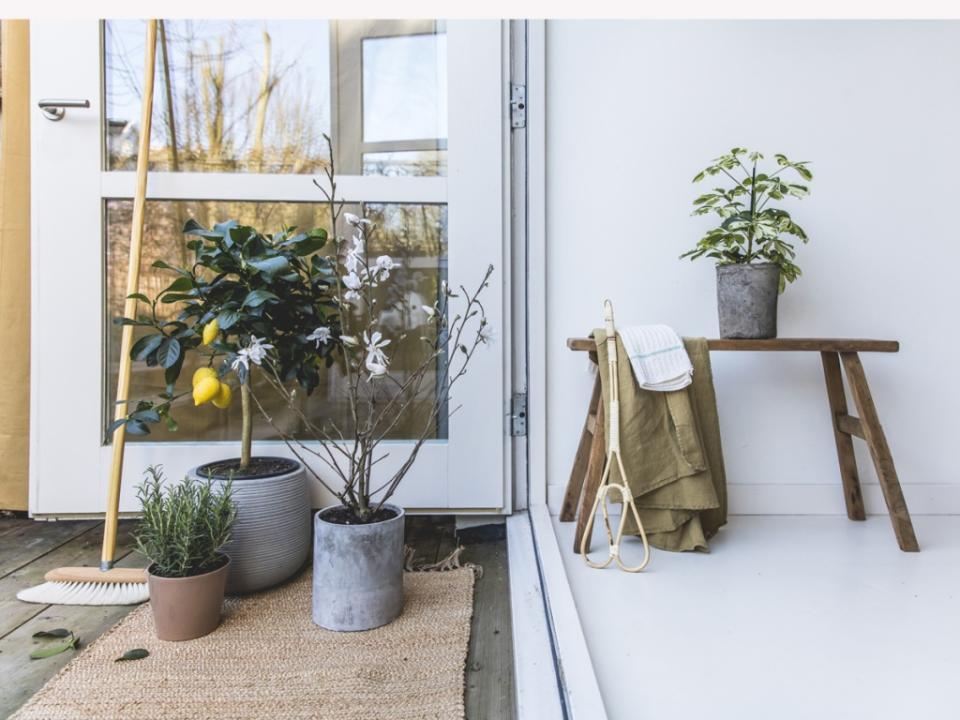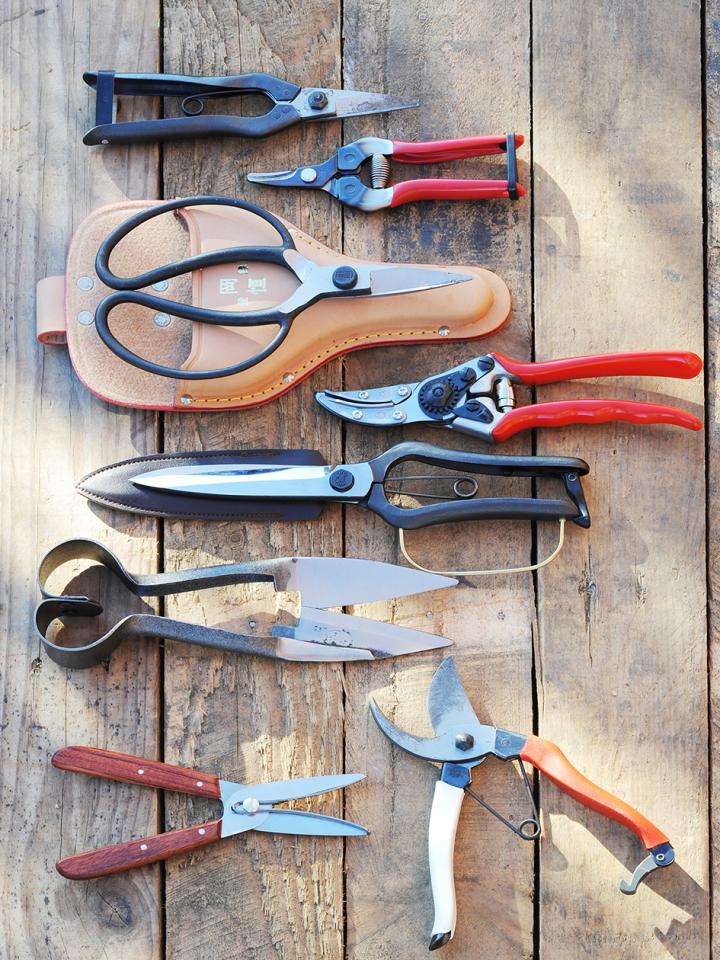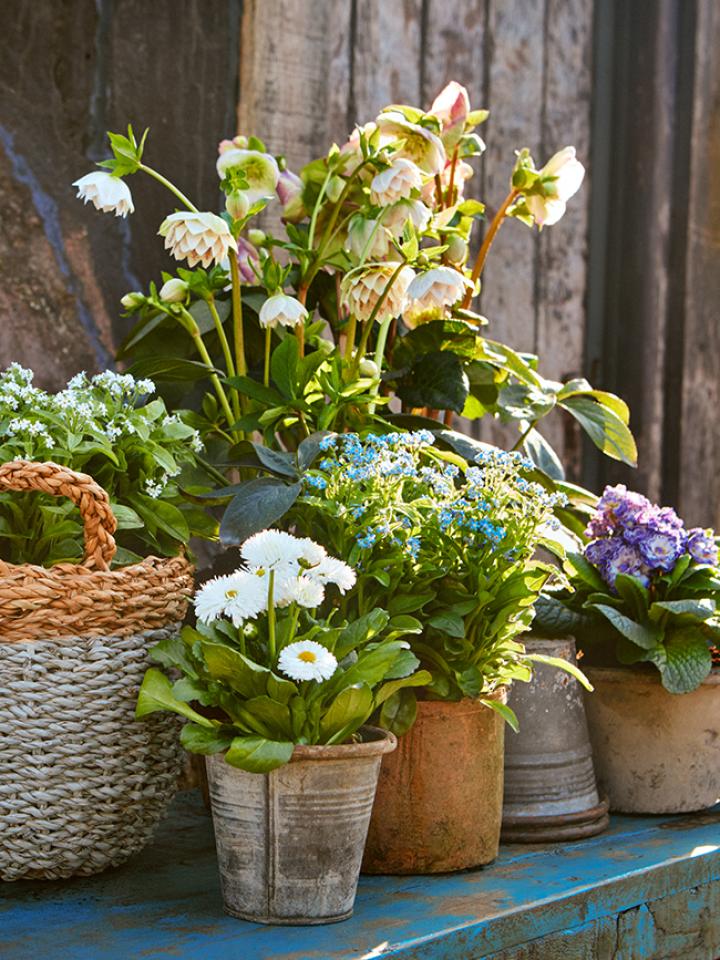five things to do in your garden in early spring
Spring is in the air! Time to get your garden or balcony ready for a new season of growth and flowering. From cleaning to sowing, mowing and pruning, these five steps will ensure you'll be able to enjoy your outdoor space to the max in the months ahead.
1) garden spring cleaning and tidying
It's time for spring cleaning! Get rid of any weeds as a first step, as well as last year's annual flowering plants. Dead leaves can also go, as you no longer need them as a protective layer against frost. It's a good idea to empty plant pots and hoe the soil between your garden plants a little, giving the soil room to breathe in the fresh spring air.
Then get to cleaning. Clean out used plant pots so they're ready for their next inhabitant and wipe down the garden fence and any outdoor furniture. Sweep your patio or any garden tiles - you could even use a pressure washer to remove caked-on dirt and grime.

2) spring pruning
Pruning makes plants bloom! Pruning in March ensures new growth and flowering, and improves the health and shape of plants and shrubs. Always make sure your pruning shears are clean and sharp. It's best to prune when the risk of severe frost has passed, so hold off if the weather still feels chilly. Prune with care and courage, because the more you prune, the stronger the new growth. Which plants can be pruned in early spring?
- Ornamental grasses and perennials: after hard frosts have passed, you can prune ornamental grasses* and perennials (flowering plants that return every year). Prune perennials stems to around 20 centimetres above the ground. You should also prune ornamental grasses* back considerably. Most ornamental grasses* can be cut back to about 10-20 centimetres.
- All shrubs which flower from summer (around the end of June): Shrubs (bushes with woody stems) can be pruned when the risk of severe frost has passed (end of March). These are plants such as lavender, red dogwood, heather, butterfly bush, (panicle) hydrangea, hibiscus, climbing rose, dwarf rose, standard rose and cat willow. Note: early-flowering shrubs (shrubs that flower in spring), such as witch hazel, winter jasmine, forsythia and lilac, should not be pruned until they have finished flowering.
- Roses: most roses can be pruned back in March, when the frosts are over. The way you prune depends on the variety. You can prune shrub roses (such as spray roses and shrub roses) back to about 10-15 centimetres above the ground. Climbing roses do not need to be pruned in the first few years after planting. After 2-3 years, prune the branches back to 3 buds, about 30-40 centimetres above the ground.
- Apple and pear trees and medlars: these trees can be pruned between January and the end of March. Prune fruit trees during a dry, frost-free period. Older trees need only a light maintenance pruning. You should bear shape in mind when pruning a young tree. To produce extra fruit on fruit trees, prune back main branches by around 30%. Prune side branches back to 3-6 buds. Always prune a branch to just above a bud.
- Berry bushes: prune back the shoots of berry bushes such as currants, whitecurrants, redcurrants and blackcurrants. The pruning method and frequency varies by species, so check before you cut.

3) MOWING AND SEEDING THE LAWN
Do you have a lawn? March is the perfect time to mow your lawn. After cutting, check the grass for bare spots and sow them with grass seed. Is the grass growing poorly in certain spots? Perhaps tall trees, overhanging branches or bushes are causing too much shade. Prune these if possible.
4) FERTILISE PLANTS (AND GRASS)
Early spring is the perfect time to fertilise grass and outdoor plants and get them ready for growth and flowering. With fertiliser, you make garden soil more fertile and healthy. This is important because it's where plants and grass get their nutrients from.
Preferably use organic fertiliser (not artificial fertiliser), and stick to the quantities stated on the packaging. Which fertiliser is most suitable for your garden depends on several factors, such as specific plant needs and soil conditions (clay soil, lime-free clay, sandy soil, etc.). Check out this British Geological Survey map for an overview of soil types. If in doubt about which fertiliser is best suited for your garden, ask an expert at your local garden centre or plant nursery for help.
5) ADD COLOUR TO YOUR GARDEN WITH EARLY SPRING BLOOMS
Are your outdoor areas all tidied up, cleaned and pruned? While this is great prep for later in the year, your garden or balcony probably looks a little barren now. Fear not - it's time for some colour! While the weather is still almost certainly too cold for summer-blooming plants, there are plenty of frost-resistant options you can start to enjoy now.
Potted bulbs such as daffodil and hyacinth are a good, quick options to add flowers and fresh greens to your outdoor space. Supplement them with cheerful pansies and daisies and your spring party is ready! Frost-resistant spring roses and wild primroses are also perfect options for your spring garden. Plant them now (after the chance of a hard frost has passed) and you will enjoy them next winter and spring!

MORE INSPIRATION FOR A bloom-filled SPRING
Need more inspiration for a spring filled with blooms? Find out which spring plants will flower early and add colour to your garden right now, or check out our spring dossier packed with fresh inspiration and planting tips. For your daily dose of inspiration, follow us on Facebook, Instagram and Pinterest.
*A note on pruning potted ornamental grass: Prune potted ornamental grass that does not stay green in March to about 10 centimetres above its soil. Ornamental grass that remains green can be cut back when it no longer looks fresh and when it starts producing young blades. You should change the potting soil of your ornamental grass every year. After two years, it's probably time to prune the roots so that they can breathe and absorb nutrients better.





